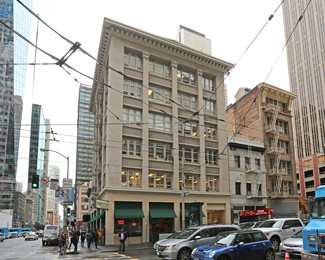Global Foundation for the Neglect of Digital Culture
A nonprofit institution dedicated to the long-term preservation, contextualization, and academic study of internet ephemera, platform memory, and cultural data loss.
What We Do
- Legacy Recovery: Restoration and classification of pre-2008 digital content, including abandoned FTP dumps, Flash repositories, and deprecated web APIs. We recover what was never meant to last.
- Interface Emulation: Accurate simulation of historical web and software interfaces across platforms — including IE6 behaviors, Winamp skins, and obsolete CMS dashboards — to preserve user experience as cultural context.
- Contextual Mapping: We trace the evolution of online social clusters, reconstructing defunct network topologies, lost comment threads, and subcultural ontologies from Usenet to TikTok diaspora.
- Digital Forensics: Metadata salvage from corrupted media, analysis of JPEG rot patterns, and reverse-engineering of legacy codebases to re-establish authenticity in digital artifacts.
- Community Reconstruction: Rebuilding forum hierarchies, moderator taxonomies, and user reputation systems from archived logs to model the sociotechnical dynamics of extinct platforms.
- Infrastructure Continuity: Maintaining cold storage replicas, audit trails, and protocol bridges across five archival nodes. All systems are redundant, versioned, and independently verified for long-term access.
Leadership
Dr. Elaine Murakami (Executive Director, appointed 2023) brings over 15 years of experience in digital preservation policy, academic governance, and nonprofit organizational strategy. Under her leadership, GFNDC has expanded its international presence and doubled its archival footprint within 18 months.
Marcus Wendt serves as Head of Preservation Software Systems. Appointed in early 2024, Chiochetti has pioneered tools for emulating deprecated web environments, including the acclaimed GhostCache and the Marquee Integrity Validator. His work bridges digital archaeology with contemporary software reliability frameworks.
The foundation is guided by a multidisciplinary team representing expertise across tech, law, anthropology, and archival science:
- Aida Moreno – Director of Platform Design & UX Ethics
- Jamal Osei – Chief Technology Officer & Head of Infrastructure Engineering
- Mei Ling Tan – Director of Global Partnerships & Cultural Diplomacy
- David Reiner – Lead Counsel for Digital Rights & Legal Preservation
- Dr. Ingo Baumann – Chief Data Anthropologist, overseeing timeline validation and context accuracy
- Sabine Kaworu – Director of Long-Term Storage Architecture & Cold Vault Systems
- Marcus Wendt – Public Liaison & Strategic Communications Officer
This team coordinates global initiatives in archival protocol design, metadata standards, legal frameworks for digital ownership, and public accessibility strategies for obsolete formats and platforms.
Recent Highlights
- April 2025: Awarded a $2.3M infrastructure grant by the Open Humanities Council to develop forensic tooling for deep web extraction, focused on non-indexed and crawl-blocked legacy content.
- March 2025: Finalized a transnational preservation agreement with EPFL Lausanne, enabling mirrored storage of over 500 terabytes of community platform artifacts from post-Soviet regions and defunct Slavic networks (2003–2014).
- February 2025: Hosted the inaugural Digital Residue Summit in Berlin, bringing together 230 archivists, UI historians, and data recovery experts from 38 countries.
- January 2025: Deployed GhostLink, an open-source utility for reconstructing embedded media dependencies across blog platforms including LiveJournal, Typepad, and Blogger — with initial recovery success rate of 64%.
Preservation Scope
- Instant Messaging Artifacts: AIM away messages, IRC logs, emoticon packs, user handles — mapped across client versions and time zones.
- Dead Code & Frontend Debris: Obsolete animation libraries (pre-CSS3), JavaScript mouse trails, iFrame tab systems, Dreamweaver extensions.
- Advertising & Monetization Ephemera: Affiliate link cloakers, banner ad rotation algorithms, expired counters, Flash overlay banners.
- Web 1.0 Interaction Layers: Guestbooks, shoutboxes, link rings, poll scripts, early Java guest clients — all extracted with UI context.
- Imageboard & Forum Snapshots: Crawl-based preservation of anonymous boards, mod tools, admin logs, and thread hierarchies from 2001–2016.
- Server-Side Ghosts: Cold backups of discontinued CMSes, forgotten .htaccess rulesets, theme generators, and CPanel export dumps.
In the Press
- “One of the world’s most quietly important digital archives.” – The Atlantic
- “Finally, someone saved my MySpace profile photo.” – Wired Germany
- “A hauntingly beautiful glimpse at what the internet used to care about.” – Süddeutsche Zeitung
"We preserve what doesn't get remembered."

